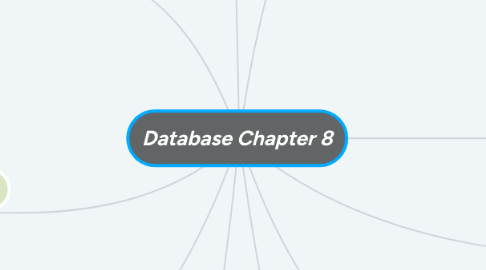
1. Types of Tablespace
1.1. SYSTEM
1.1.1. Stores the data dictionary data
1.2. USERS
1.2.1. Stores the table data created by the end users
1.3. TEMP
1.3.1. Stores the temporary tables and indexes created during the execution of SQL statements
1.4. UNDOTBS1
1.4.1. Stores database transaction recovery information
2. Evolution of the Database Administration Function
2.1. Information systems (IS) department
2.2. Database administrator
2.3. Systems administrator
2.4. Data administrator (DA) or information resource manager (IRM)
3. DBA’s Managerial Role
3.1. Disaster management
3.2. Concurrent backup
3.3. Incremental backup
3.4. Full backup or database dump
4. Developing a Data Administration Strategy
4.1. Information engineering (IE):
4.2. Information systems architecture (ISA):
5. Computer-Aided Systems Engineering (CASE) Tools
5.1. Front-end CASE tools
5.1.1. Provide support for the planning, analysis, and design phases
5.2. Back-end CASE tools
5.2.1. Provide support for the coding and implementation phases
6. Data
6.1. Dirty data
6.2. Data quality
6.3. Data profiling software
6.4. Master data management ( MDM ) software
7. Special Considerations
7.1. Technological aspect
7.2. Managerial aspect
7.3. Cultural aspect
8. Contrasting DA and DBA activities and characteriestics
8.1. DA(Data administrator)
8.1.1. Perform strategic planning
8.1.2. Sts long-term goals
8.1.3. Sets policies and standards
8.1.4. job is broad in scope
8.2. DBA(Database administrator)
8.2.1. Controls and supervises
8.2.2. Executes plans to reach goals
8.2.3. Enforces policies and procedures
8.2.4. Job is narrow in scope
9. Data Dictionary
9.1. Active data dictionary
9.1.1. Automatically updated by the DBMS with every database access
9.2. Passive data dictionary
9.2.1. Requires running a batch process
10. Security Vulnerability
10.1. Security threat
10.1.1. Imminent security violation
10.2. Security breach
10.2.1. Occurs when a security threat is exploited and could lead to a database whose integrity is preserved or corrupted

